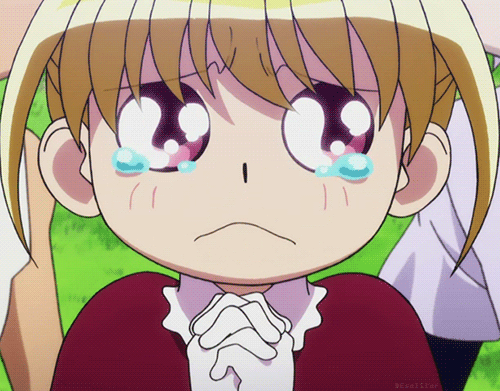Post by JACK-2 on Aug 8, 2015 11:46:24 GMT -5
venturebeat.com/community/2014/10/18/are-consoles-losing-the-accessibility-that-defined-them/
![]()
PS4 vs Xbox One
This post has not been edited by the GamesBeat staff. Opinions by GamesBeat community writers do not necessarily reflect those of the staff.
With all the talk about day one patches, firmware updates, and hard disc install sizes, sometimes you start to wonder what happened to the simplicity of putting a game inside a machine and turning it on. The main change that’s occurred with console gaming over the past hardware cycle is that it’s become more like PC gaming. That’s inspired a lot of evolution, but it’s also starting to defeat some of the reason people even buy consoles.
Downloadable content has enabled developers to easily add new gameplay to already released console titles (for better or worse). With patches, they can fix problems that before would either go unchecked or require new print runs. And hard drives have given them more freedom in how they make their games manage data. Consoles also now have true operating systems that gain features over time. The PlayStation 2’s interface has stayed the same since 2000, but look at the Xbox 360’s interface in 2005 compared to now. These are all features taken straight from the PC world, and they’ve made things better — and more complicated — for console consumers.
This affects the fundamental experience of consoles because they’re typically made for people who don’t want to deal with the complexities of PC gaming and hardware. That point is even more important as fewer and fewer games remain exclusive to consoles. It’s not just these systems that have changed, though.
Just compare the process of buying and first starting up a game on PC versus the PlayStation 4 or Xbox One. On both, you have the choice of either getting a disc or downloading the full game. On both, you have to spend at least several minutes installing the game and then perhaps downloading the latest update before finally getting to play. And you’ll probably have to keep patching the game as more updates are released, as well as possibly downloading additional content. Performing all these actions feels about equally easy on consoles and PCs today. If I’m not mistaken, the only real difference from a software standpoint is that on PC, you still have to deal with drivers and mess around with graphics settings.
Compare that to, say, the ’90s. You’d buy a cartridge from the store, slam it into the machine, and turn the power on. This is a main reason why I still have an Nintendo Entertainment System (NES) hooked up right now. Back then, it was easy to see why people bought consoles because first time setup for a PC game involved installing disc, maybe inputting a CD key, and trying to track down patches on third-party websites. PC gaming was very obviously for power users. Now, the difference isn’t so clear.
Strangely — or maybe not so strangely — Nintendo has become the oasis in this situation. You can still just put the disc into the Wii U or the card into the 3DS and play — barring patches and DLC on the Wii U side (they exist on the 3DS but are still rare).
By and large, the recent advancements are necessary, but manufacturers and developers shouldn’t forget the whole purpose behind consoles. They’re aimed at an audience that just wants to sit down in front of a TV and play games without worrying about how they work. Instead, people flock to forums to complain about troublesome patches, installs, and DLC.
The mobile sector, meanwhile, has mastered accessibility and is using all the aforementioned things as strengths instead of weaknesses. As a result, it is siphoning the mass audience away from consoles. Both iOS and Android have made acquiring, installing, and using software easier than ever before.
To be fair, the PS4 and Xbox One are a significant leap forward from their predecessors. Patches are automatic now, console games are better at preloading, and the consoles usually have standby modes. The ability to play while installing games is a nice feature on consoles that’s still uncommon on PC. One problem affecting both is the gigantic install and download sizes of today’s triple-A games, but that’s a whole discussion in itself.
Making digital software shopping easy for consumers is where Sony, Microsoft, and Nintendo are most disadvantaged right now. Sony and Microsoft today do a lot to market their digital libraries, but Steam and other online PC vendors remain constantly ahead with too many features to list here that I wish console manufacturers would copy.
Console games are still bound by retail. Steam and Apple can market digital content so aggressively because they focus all their energy on digital. Console makers are still first and foremost trying to get people into GameStop and Walmart and are still in deep with those retailers.
Ease of access is an imperative issue for consoles right now. They’re under assault from a new, far more accessible alternative that’s drawing away casual consumers, and on the other end, PC has become far less of a headache for power users.
PS4 vs Xbox One
This post has not been edited by the GamesBeat staff. Opinions by GamesBeat community writers do not necessarily reflect those of the staff.
With all the talk about day one patches, firmware updates, and hard disc install sizes, sometimes you start to wonder what happened to the simplicity of putting a game inside a machine and turning it on. The main change that’s occurred with console gaming over the past hardware cycle is that it’s become more like PC gaming. That’s inspired a lot of evolution, but it’s also starting to defeat some of the reason people even buy consoles.
Downloadable content has enabled developers to easily add new gameplay to already released console titles (for better or worse). With patches, they can fix problems that before would either go unchecked or require new print runs. And hard drives have given them more freedom in how they make their games manage data. Consoles also now have true operating systems that gain features over time. The PlayStation 2’s interface has stayed the same since 2000, but look at the Xbox 360’s interface in 2005 compared to now. These are all features taken straight from the PC world, and they’ve made things better — and more complicated — for console consumers.
This affects the fundamental experience of consoles because they’re typically made for people who don’t want to deal with the complexities of PC gaming and hardware. That point is even more important as fewer and fewer games remain exclusive to consoles. It’s not just these systems that have changed, though.
Just compare the process of buying and first starting up a game on PC versus the PlayStation 4 or Xbox One. On both, you have the choice of either getting a disc or downloading the full game. On both, you have to spend at least several minutes installing the game and then perhaps downloading the latest update before finally getting to play. And you’ll probably have to keep patching the game as more updates are released, as well as possibly downloading additional content. Performing all these actions feels about equally easy on consoles and PCs today. If I’m not mistaken, the only real difference from a software standpoint is that on PC, you still have to deal with drivers and mess around with graphics settings.
Compare that to, say, the ’90s. You’d buy a cartridge from the store, slam it into the machine, and turn the power on. This is a main reason why I still have an Nintendo Entertainment System (NES) hooked up right now. Back then, it was easy to see why people bought consoles because first time setup for a PC game involved installing disc, maybe inputting a CD key, and trying to track down patches on third-party websites. PC gaming was very obviously for power users. Now, the difference isn’t so clear.
Strangely — or maybe not so strangely — Nintendo has become the oasis in this situation. You can still just put the disc into the Wii U or the card into the 3DS and play — barring patches and DLC on the Wii U side (they exist on the 3DS but are still rare).
By and large, the recent advancements are necessary, but manufacturers and developers shouldn’t forget the whole purpose behind consoles. They’re aimed at an audience that just wants to sit down in front of a TV and play games without worrying about how they work. Instead, people flock to forums to complain about troublesome patches, installs, and DLC.
The mobile sector, meanwhile, has mastered accessibility and is using all the aforementioned things as strengths instead of weaknesses. As a result, it is siphoning the mass audience away from consoles. Both iOS and Android have made acquiring, installing, and using software easier than ever before.
To be fair, the PS4 and Xbox One are a significant leap forward from their predecessors. Patches are automatic now, console games are better at preloading, and the consoles usually have standby modes. The ability to play while installing games is a nice feature on consoles that’s still uncommon on PC. One problem affecting both is the gigantic install and download sizes of today’s triple-A games, but that’s a whole discussion in itself.
Making digital software shopping easy for consumers is where Sony, Microsoft, and Nintendo are most disadvantaged right now. Sony and Microsoft today do a lot to market their digital libraries, but Steam and other online PC vendors remain constantly ahead with too many features to list here that I wish console manufacturers would copy.
Console games are still bound by retail. Steam and Apple can market digital content so aggressively because they focus all their energy on digital. Console makers are still first and foremost trying to get people into GameStop and Walmart and are still in deep with those retailers.
Ease of access is an imperative issue for consoles right now. They’re under assault from a new, far more accessible alternative that’s drawing away casual consumers, and on the other end, PC has become far less of a headache for power users.





